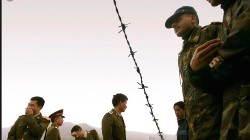Tibetet Segítő Társaság Sambhala Tibet Központ
Tibet Support Association Sambhala Tibet Center
székhely / telephely H-Budapest I. Attila út 123..
(00-36) 70 431 9343 (00-36)70 944 0260 (06-1)782 7721
sambhala@tibet.hu www.tibet.hu tibetpress.info
Facebook/Sambhala Tibet Központ Facebook/Tibett Segítő Társaság
MagnetBank/ 16200010-00110240
IBAN/HU94 16200010 00110240 00000000 SWIFT/HBWEHUHB
(1%) adószám/ 18061347-1-41
nyitva tartás/hétköznap 12.00-20.00 hétvégén előadás függő
» Retro» Tibeti művészet» Interjú» Levelek» Tibet Press» Tibet Press English» Dharma Press» Human Rights» Világ» Kína» Magyar» Ujgur» Belső-Mongólia » KőrösiCsoma» Élettér» Határozatok» Nyilatkozatok» tibeti művészet» lapszemle.hu» thetibetpost.com» eastinfo.hu» rangzen.net» ChoegyalTenzin» tibet.net» phayul.com» DalaiLama.com» vilaghelyzete.blogspot.com» Videók» Linkek» TibetiHírek» Szerkesztőség
A rivális katonák konfrontációja az indo-tibeti határon Ladakhban
2019. szeptember 13./Phayul.com/TibetPress
Jelenleg csak angolul olvasható. Magyarul később.
eredeti cikk
By Tenzin Dharpo DHARAMSHALA, Sept. 13: Tension between Indian and Chinese soldiers escalated at the Indo-Tibetan border in Ladakh near the Pangong lake on Wednesday with confrontation between the rival soldiers continuing well into late evening that day.
DHARAMSHALA, Sept. 13: Tension between Indian and Chinese soldiers escalated at the Indo-Tibetan border in Ladakh near the Pangong lake on Wednesday with confrontation between the rival soldiers continuing well into late evening that day.
The scuffle began around dawn of September 11 when Indian soldiers patrolling the north bank of the Pangong lake were confronted by Chinese soldiers who objected to their presence in the area. This led to a scuffle between the rival soldiers, with both sides sending some reinforcements to the area. Situated at a height of about 4,250 m, Pangong Tso runs along 134 kms and extends from India to Tibet, two thirds of which is controlled by China.
Times of India reported that delegation-level talks led by brigadier-rank officers were agreed as per the established bilateral mechanism to defuse tensions. “Such incidents often take place due to differing perceptions of where the Line of Actual Control (LAC) actually lies … they are usually resolved through border personnel meetings, flag meetings and the like,” said an officer.
In August 2017, Chinese soldiers and Indian counterparts locked horns in the same region called the “Finger-5 to Finger-8” named after a mountains terrain there. The confrontation later escalated into full blown physical fight. The videos captured of the scuffle at the time showed both sides using stones and rods to fight with against each other, resulting in injuries to personnel on both sides.
Experts say that the Indian army is much more equipped to handle a PLA onslaught in contrast to the Sino-Indian war of 1962. Indian army is fine-tuning its foremost battle readiness exercises with a major war game to test its new integrated battle groups (IBGs) in Arunachal Pradesh next month. The new IBGs, with a potent mix of infantry, tanks, artillery, air defence, signals, and engineers, ensure the Indian army can mobilise fast and strike hard across the borders with Pakistan and China.
